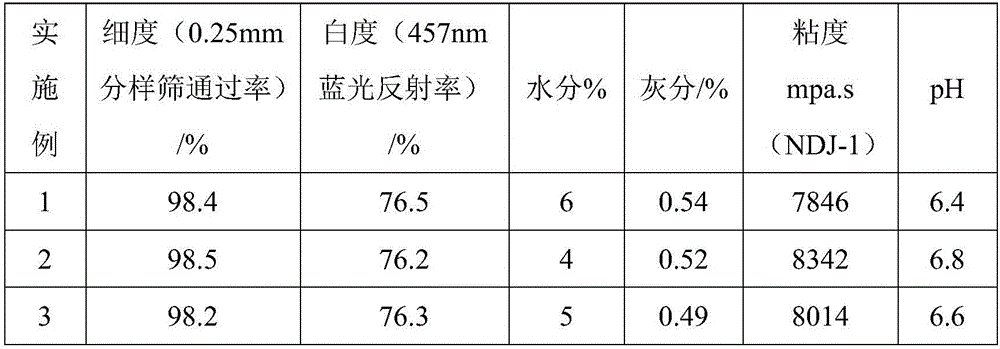Method for preparing clay material for 3D printing
A 3D printing and clay technology, applied in clay products, applications, household appliances, etc., can solve problems such as unfavorable support and modeling, poor clay material properties, etc., and achieve the effects of good dimensional accuracy, low cost, and broad market prospects
- Summary
- Abstract
- Description
- Claims
- Application Information
AI Technical Summary
Problems solved by technology
Method used
Image
Examples
preparation example Construction
[0053] The preparation method of the clay material that can be used for 3D printing, comprises the following steps:
[0054] S1: Take the soil with a pH of 8-11.5, air-dry it naturally, put it into a planetary ball mill to grind, pass the soil powder through a 350-400 mesh sieve, and obtain the clay material of the raw material;
[0055] S2: crushing the stone through a 250-300 mesh sieve to obtain calcium carbonate powder;
[0056] S3: Treat plants, fallen leaves, and residues at 1100-1300°C to make plant ash;
[0057]S4: Mix the clay material prepared in step S1, the calcium carbonate powder prepared in step S2, and the plant ash prepared in step S3 into a low-temperature pulverizer, and pulverize the mixture at a temperature of -100-108°C for 2- 3h, obtain 80-100 mesh material A after sieving;
[0058] S5: Add a specific synthetic agent to the material A prepared in step S4, raise the temperature to 152-160° C., knead at a rotation speed of 60-80 r / min for 4-5 hours, and ...
Embodiment 1
[0072] A clay material that can be used for 3D printing, including raw materials with the following mass ratio: clay material: calcium carbonate powder: plant ash: specific synthetic agent: starch synthetic agent = 28:12:8:6:5;
[0073] The specific synthetic agent is in parts by weight, including the following raw materials: 18 parts of regulator, 15 parts of strengthening agent, 12 parts of stabilizer, 12 parts of bridging agent, 8 parts of toughening agent, 8 parts of thickening agent, stabilizer 6 parts, 4 parts of antifungal agent, 4 parts of terminator;
[0074] The regulator is JINHASS;
[0075] The strengthening agent is 701 powder strengthening agent;
[0076] The stabilizer is composed of salt gypsum, phosphogypsum, fluorogypsum, iron oxide, calcium oxide;
[0077] The bridging agent is an acrylic acid type compatibilizer;
[0078] The toughening agent is silicon carbide whisker;
[0079] The thickener is a cellulose ether thickener;
[0080] Described stabilize...
Embodiment 2
[0102] A clay material that can be used for 3D printing, including raw materials with the following mass ratio: clay material: calcium carbonate powder: plant ash: specific synthetic agent: starch synthetic agent = 25:8:6:6:4;
[0103] The specific synthetic agent is in parts by weight, including the following raw materials: 15 parts of regulator, 10 parts of strengthening agent, 8 parts of stabilizer, 8 parts of bridging agent, 6 parts of toughening agent, 6 parts of thickener, stabilizer 4 parts, 2 parts of antifungal agent, 2 parts of terminator;
[0104] The regulator is JINHASS;
[0105] The strengthening agent is 701 powder strengthening agent;
[0106] The stabilizer is composed of salt gypsum, phosphogypsum, fluorogypsum, iron oxide, calcium oxide;
[0107] The bridging agent is an acrylic acid type compatibilizer;
[0108] The toughening agent is silicon carbide whisker;
[0109] The thickener is a cellulose ether thickener;
[0110] Described stabilizer is clay ...
PUM
 Login to View More
Login to View More Abstract
Description
Claims
Application Information
 Login to View More
Login to View More - R&D
- Intellectual Property
- Life Sciences
- Materials
- Tech Scout
- Unparalleled Data Quality
- Higher Quality Content
- 60% Fewer Hallucinations
Browse by: Latest US Patents, China's latest patents, Technical Efficacy Thesaurus, Application Domain, Technology Topic, Popular Technical Reports.
© 2025 PatSnap. All rights reserved.Legal|Privacy policy|Modern Slavery Act Transparency Statement|Sitemap|About US| Contact US: help@patsnap.com


